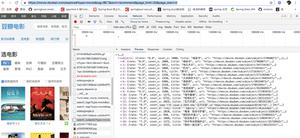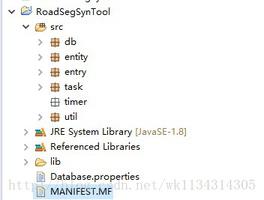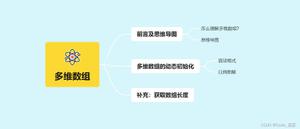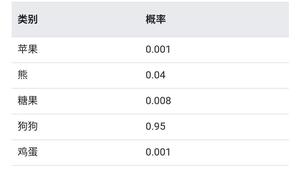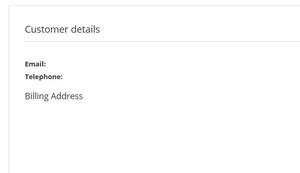使用Java发送电子邮件
我正在尝试使用Java发送电子邮件:
import java.util.*;import javax.mail.*;
import javax.mail.internet.*;
import javax.activation.*;
public class SendEmail {
public static void main(String [] args) {
// Recipient's email ID needs to be mentioned.
String to = "abcd@gmail.com";
// Sender's email ID needs to be mentioned
String from = "web@gmail.com";
// Assuming you are sending email from localhost
String host = "localhost";
// Get system properties
Properties properties = System.getProperties();
// Setup mail server
properties.setProperty("mail.smtp.host", host);
// Get the default Session object.
Session session = Session.getDefaultInstance(properties);
try{
// Create a default MimeMessage object.
MimeMessage message = new MimeMessage(session);
// Set From: header field of the header.
message.setFrom(new InternetAddress(from));
// Set To: header field of the header.
message.addRecipient(Message.RecipientType.TO,
new InternetAddress(to));
// Set Subject: header field
message.setSubject("This is the Subject Line!");
// Now set the actual message
message.setText("This is actual message");
// Send message
Transport.send(message);
System.out.println("Sent message successfully....");
}catch (MessagingException mex) {
mex.printStackTrace();
}
}
}
我收到错误消息:
javax.mail.MessagingException: Could not connect to SMTP host: localhost, port: 25; nested exception is:java.net.ConnectException: Connection refused: connect
at com.sun.mail.smtp.SMTPTransport.openServer(SMTPTransport.java:1706)
at com.sun.mail.smtp.SMTPTransport.protocolConnect(SMTPTransport.java:525)
此代码可以发送电子邮件吗?
回答:
户名+密码不再是推荐的解决方案。这是因为
我尝试了此操作,Gmail向该代码中用作用户名的电子邮件发送了一封电子邮件,其中说我们最近阻止了你的Google帐户的登录尝试,并将我定向到此支持页面:support.google.com/accounts/answer/6010255因此它看起来很有效,用于发送邮件的电子邮件帐户需要降低自身的安全性
Google已发布Gmail API- https://developers.google.com/gmail/api/?hl= zh- CN。我们应该使用oAuth2方法,而不是用户名+密码。
这是与Gmail API配合使用的代码段。
GoogleMail.javaimport com.google.api.client.util.Base64;
import com.google.api.services.gmail.Gmail;
import com.google.api.services.gmail.model.Message;
import java.io.ByteArrayOutputStream;
import java.io.IOException;
import java.util.Properties;
import javax.mail.MessagingException;
import javax.mail.Session;
import javax.mail.internet.InternetAddress;
import javax.mail.internet.MimeMessage;
/**
*
* @author doraemon
*/
public class GoogleMail {
private GoogleMail() {
}
private static MimeMessage createEmail(String to, String cc, String from, String subject, String bodyText) throws MessagingException {
Properties props = new Properties();
Session session = Session.getDefaultInstance(props, null);
MimeMessage email = new MimeMessage(session);
InternetAddress tAddress = new InternetAddress(to);
InternetAddress cAddress = cc.isEmpty() ? null : new InternetAddress(cc);
InternetAddress fAddress = new InternetAddress(from);
email.setFrom(fAddress);
if (cAddress != null) {
email.addRecipient(javax.mail.Message.RecipientType.CC, cAddress);
}
email.addRecipient(javax.mail.Message.RecipientType.TO, tAddress);
email.setSubject(subject);
email.setText(bodyText);
return email;
}
private static Message createMessageWithEmail(MimeMessage email) throws MessagingException, IOException {
ByteArrayOutputStream baos = new ByteArrayOutputStream();
email.writeTo(baos);
String encodedEmail = Base64.encodeBase64URLSafeString(baos.toByteArray());
Message message = new Message();
message.setRaw(encodedEmail);
return message;
}
public static void Send(Gmail service, String recipientEmail, String ccEmail, String fromEmail, String title, String message) throws IOException, MessagingException {
Message m = createMessageWithEmail(createEmail(recipientEmail, ccEmail, fromEmail, title, message));
service.users().messages().send("me", m).execute();
}
}
要通过oAuth2构建授权的Gmail服务,请使用以下代码段。
实用工具
import com.google.api.client.auth.oauth2.Credential;import com.google.api.client.extensions.jetty.auth.oauth2.LocalServerReceiver;
import com.google.api.client.googleapis.auth.oauth2.GoogleAuthorizationCodeFlow;
import com.google.api.client.googleapis.auth.oauth2.GoogleClientSecrets;
import com.google.api.client.googleapis.javanet.GoogleNetHttpTransport;
import com.google.api.client.http.HttpTransport;
import com.google.api.client.json.gson.GsonFactory;
import com.google.api.client.util.store.FileDataStoreFactory;
import com.google.api.services.gmail.Gmail;
import com.google.api.services.gmail.GmailScopes;
import com.google.api.services.oauth2.Oauth2;
import com.google.api.services.oauth2.model.Userinfoplus;
import java.io.BufferedWriter;
import java.io.File;
import java.io.FileOutputStream;
import java.io.IOException;
import java.io.InputStreamReader;
import java.io.OutputStreamWriter;
import java.nio.file.Files;
import java.nio.file.Paths;
import java.security.GeneralSecurityException;
import java.util.HashSet;
import java.util.Set;
import org.apache.commons.logging.Log;
import org.apache.commons.logging.LogFactory;
import org.yccheok.jstock.engine.Pair;
/**
*
* @author yccheok
*/
public class Utils {
/** Global instance of the JSON factory. */
private static final GsonFactory JSON_FACTORY = GsonFactory.getDefaultInstance();
/** Global instance of the HTTP transport. */
private static HttpTransport httpTransport;
private static final Log log = LogFactory.getLog(Utils.class);
static {
try {
// initialize the transport
httpTransport = GoogleNetHttpTransport.newTrustedTransport();
} catch (IOException ex) {
log.error(null, ex);
} catch (GeneralSecurityException ex) {
log.error(null, ex);
}
}
private static File getGmailDataDirectory() {
return new File(org.yccheok.jstock.gui.Utils.getUserDataDirectory() + "authentication" + File.separator + "gmail");
}
/**
* Send a request to the UserInfo API to retrieve the user's information.
*
* @param credentials OAuth 2.0 credentials to authorize the request.
* @return User's information.
* @throws java.io.IOException
*/
public static Userinfoplus getUserInfo(Credential credentials) throws IOException
{
Oauth2 userInfoService =
new Oauth2.Builder(httpTransport, JSON_FACTORY, credentials).setApplicationName("JStock").build();
Userinfoplus userInfo = userInfoService.userinfo().get().execute();
return userInfo;
}
public static String loadEmail(File dataStoreDirectory) {
File file = new File(dataStoreDirectory, "email");
try {
return new String(Files.readAllBytes(Paths.get(file.toURI())), "UTF-8");
} catch (IOException ex) {
log.error(null, ex);
return null;
}
}
public static boolean saveEmail(File dataStoreDirectory, String email) {
File file = new File(dataStoreDirectory, "email");
try {
//If the constructor throws an exception, the finally block will NOT execute
BufferedWriter writer = new BufferedWriter(new OutputStreamWriter(new FileOutputStream(file), "UTF-8"));
try {
writer.write(email);
} finally {
writer.close();
}
return true;
} catch (IOException ex){
log.error(null, ex);
return false;
}
}
public static void logoutGmail() {
File credential = new File(getGmailDataDirectory(), "StoredCredential");
File email = new File(getGmailDataDirectory(), "email");
credential.delete();
email.delete();
}
public static Pair<Pair<Credential, String>, Boolean> authorizeGmail() throws Exception {
// Ask for only the permissions you need. Asking for more permissions will
// reduce the number of users who finish the process for giving you access
// to their accounts. It will also increase the amount of effort you will
// have to spend explaining to users what you are doing with their data.
// Here we are listing all of the available scopes. You should remove scopes
// that you are not actually using.
Set<String> scopes = new HashSet<>();
// We would like to display what email this credential associated to.
scopes.add("email");
scopes.add(GmailScopes.GMAIL_SEND);
// load client secrets
GoogleClientSecrets clientSecrets = GoogleClientSecrets.load(Utils.JSON_FACTORY,
new InputStreamReader(Utils.class.getResourceAsStream("/assets/authentication/gmail/client_secrets.json")));
return authorize(clientSecrets, scopes, getGmailDataDirectory());
}
/** Authorizes the installed application to access user's protected data.
* @return
* @throws java.lang.Exception */
private static Pair<Pair<Credential, String>, Boolean> authorize(GoogleClientSecrets clientSecrets, Set<String> scopes, File dataStoreDirectory) throws Exception {
// Set up authorization code flow.
GoogleAuthorizationCodeFlow flow = new GoogleAuthorizationCodeFlow.Builder(
httpTransport, JSON_FACTORY, clientSecrets, scopes)
.setDataStoreFactory(new FileDataStoreFactory(dataStoreDirectory))
.build();
// authorize
return new MyAuthorizationCodeInstalledApp(flow, new LocalServerReceiver()).authorize("user");
}
public static Gmail getGmail(Credential credential) {
Gmail service = new Gmail.Builder(httpTransport, JSON_FACTORY, credential).setApplicationName("JStock").build();
return service;
}
}
以上是 使用Java发送电子邮件 的全部内容, 来源链接: utcz.com/qa/420063.html

